Skin Rashes Hives Biography
Source(google.com.pk)
Hives, called urticaria by doctors, is one of the most common causes of skin inflammation. Up to 20% of the population will suffer from urticaria at least once in their lives.
Hives are large, itchy, red rashes that rise up and go away quickly, sometimes to be replaced by others. A few people find that the condition recurs or lasts more than 6 weeks.
Causes of Hives
Hives appear as a reaction to an external irritant that is ingested or comes in contact with the skin. In response to the irritant, the body releases chemicals such as histamine that cause itching and inflammation. Irritants can include certain foods, medications, cosmetic products, insect stings, chemicals, infections, and medical problems, and even exposure to extreme heat or cold.
In a minority of people with hives, a clear allergic link can be proven. They develop rashes after eating certain foods, taking certain medications, or being stung by an insect. Foods that can be associated with hives include:
- eggs
- milk
- nuts
- fish and shellfish
- berries
- chocolate
- tomatoes
Coffee, alcohol, and tobacco are rarely identified as triggers of acute attacks of hives, but people who suffer from chronic hives often report that these substances make their symptoms worse.
Almost any medication can provoke hives. These are some of the most common culprits:
- acetylsalicylic acid* (ASA) and other anti-inflammatory medications (e.g., ibuprofen, naproxen)
- angiotensin converting enzyme inhibitors (ACE inhibitors; e.g., ramipril, lisinopril, and enalapril)
- antibiotics such as penicillins and sulfonamides
- iodide
- antiepileptic medications (e.g., carbamazepine, phenytoin)
- anesthetics (e.g., lidocaine)
- vancomycin
- codeine and other narcotic painkillers
If you get a rash from medications or food, it may not be the primary ingredient that's causing the problem. It could be a preservative or other additive. For example, if several different foods and medications seem to give you hives, you may be reacting to tartrazine, a colouring agent frequently used in pills and food.
Cosmetics, soaps, perfumes, and lotions can also cause reactions. Often, this will only occur when you switch to a new type. This may make it easier to identify the cause of your hives. Other common irritants are nickel in jewellery and latex in gloves or condoms.
Allergic urticaria is the name given to hives caused by allergic reactions to food, insect bites, medications, or makeup. Other types are caused by physical irritation, such as sunlight, cold, or rubbing of the skin. While we don't call these types allergic, the underlying process is much the same.
Hives brought on by sunlight (photosensitive urticaria) may not seem like an allergic condition at first sight, but the evidence suggests it is. People have become sensitive to light after receiving the blood product immunoglobulin from others with this rare condition.
The same is true of hives caused by cold temperatures. It seems likely that the blood of people with these conditions carries abnormal immune cells. These cells attack when confronted with chemicals that are normally released in the skin by cold, sunlight, or some other external circumstance.
Dozens of infections can cause hives, including throat, stomach, and genital or urinary (genitourinary) tract infections; fungal infections; mononucleosis; and hepatitis. The common cold often causes hives in children. Hives aren't directly caused by the infectious organism, as in chickenpox or cellulitis. Rather, they're caused by "friendly fire" from the human body's own defences.
Other triggers frequently associated with hives include:
- friction – about 5% of the population are prone to developing skin rashes after gentle rubbing or scratching of the skin; this condition is calleddermatographism
- swimming, which can cause fairly severe reactions, probably more due to the cold than to the water
- exercise, stress, and hot showers, which cause a form of hives calledcholinergic urticaria
- pressure from belts, straps, and elastic, causing pressure urticaria
- pregnancy – hives often appear late in pregnancy
Chronic or recurring hives might mean you're being repeatedly exposed to a trigger, or it might be a sign of underlying disease. Lupus, rheumatoid arthritis, and thyroid disorders are diseases likely to cause hives to appear.
Symptoms and Complications of Hives
Hives are itchy, red welts on the skin. They may join together to form one big rash or may be spread out to form several smaller ones. They're often large and slightly raised. The edge of the rash is often the most inflamed part, with the centre being paler in colour. There may be pain or burning instead of itching.
Acute hives usually last no more than 24 hours, but some cases can last up to 6 weeks. Chronic hives last for more than 6 weeks.
Occasionally the rash is more than skin deep. If histamine and other inflammatory agents are released into the layers just under the skin, the swelling is more severe and itching is likely to be replaced by pain. This condition is called angioedema.
Angioedema can cause alarming swelling in the mucous membrane of the lips, mouth, gut, genitals, or throat. The swelling usually goes down within a day, but very rarely it interferes with breathing and requires emergency treatment. If you experience hives that are associated with dizziness, difficulty breathing, or throat swelling, get immediate medical attention.
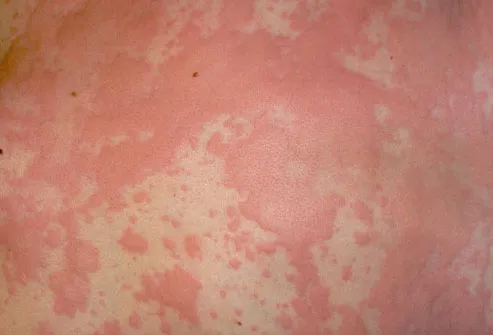

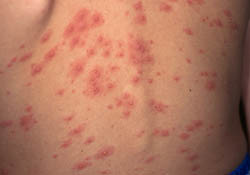

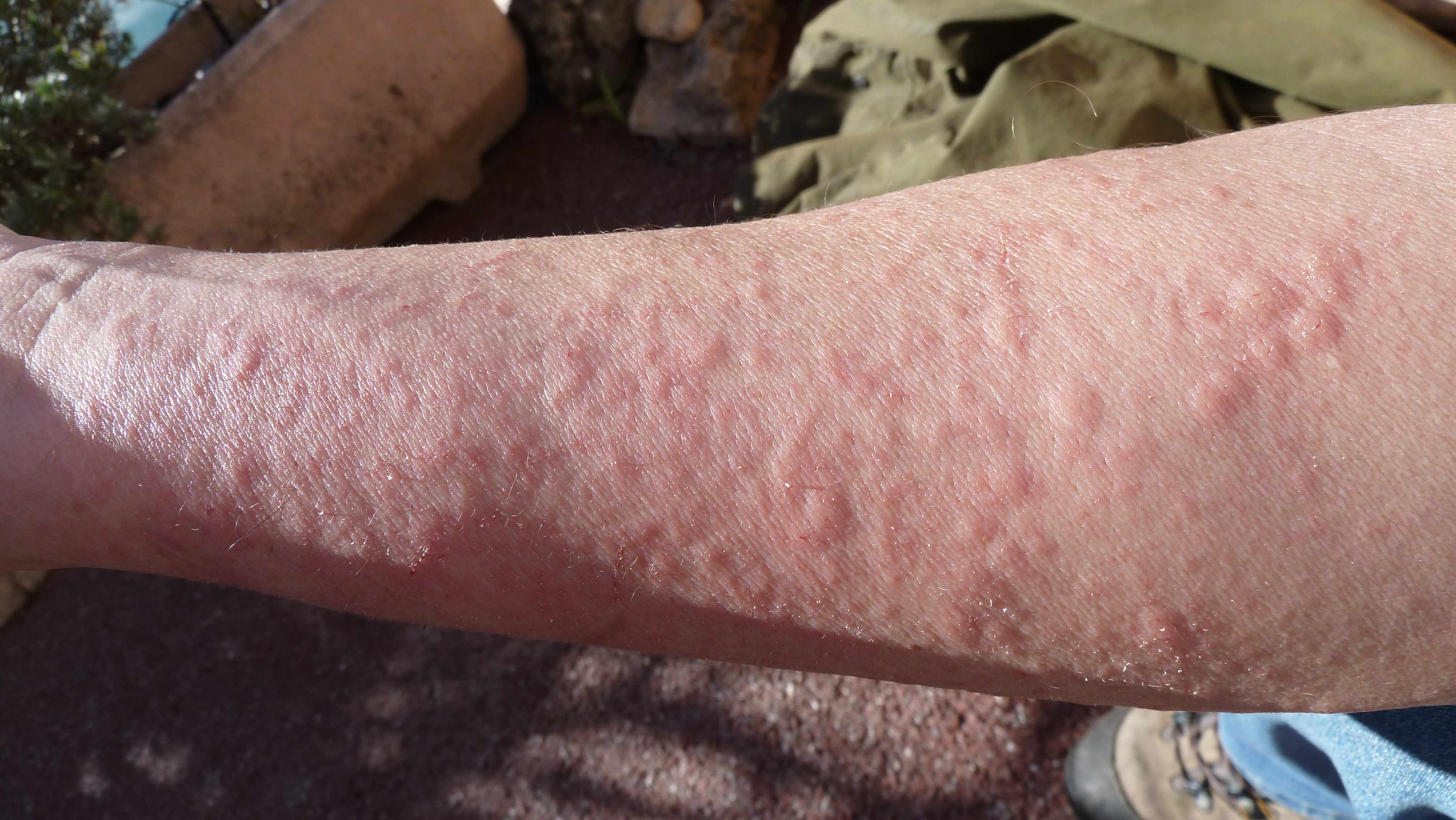
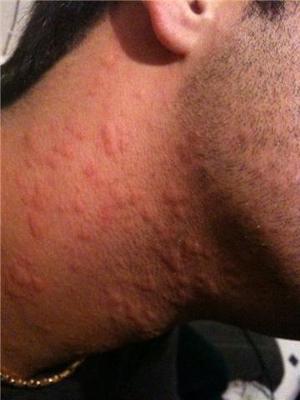

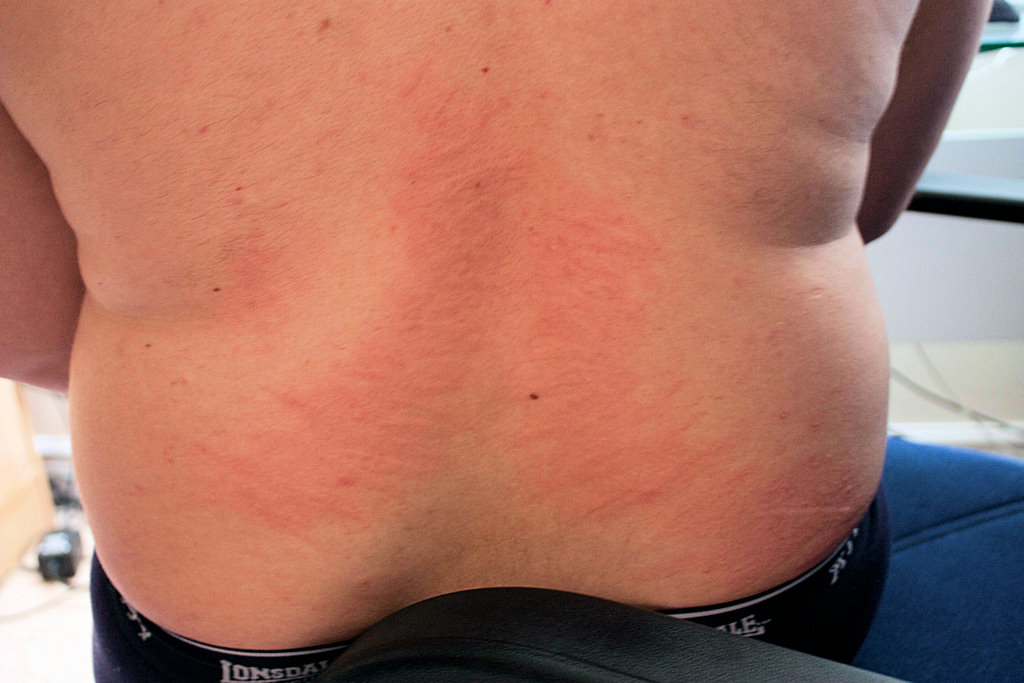


No comments:
Post a Comment